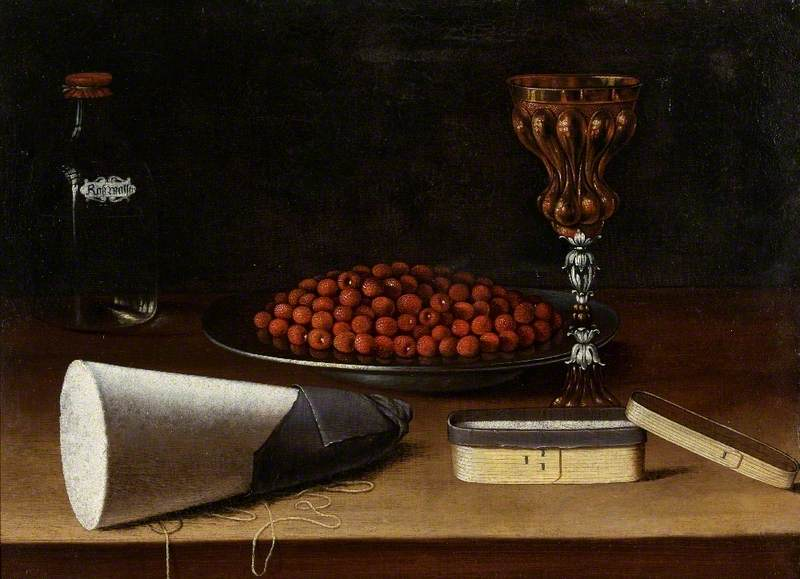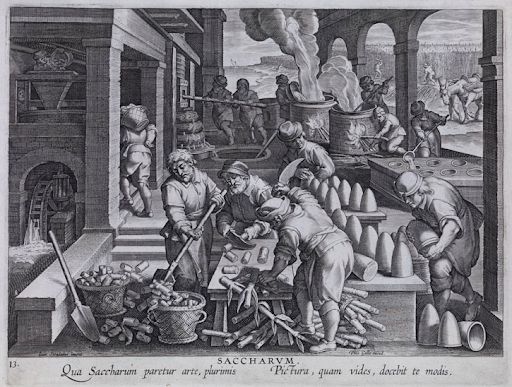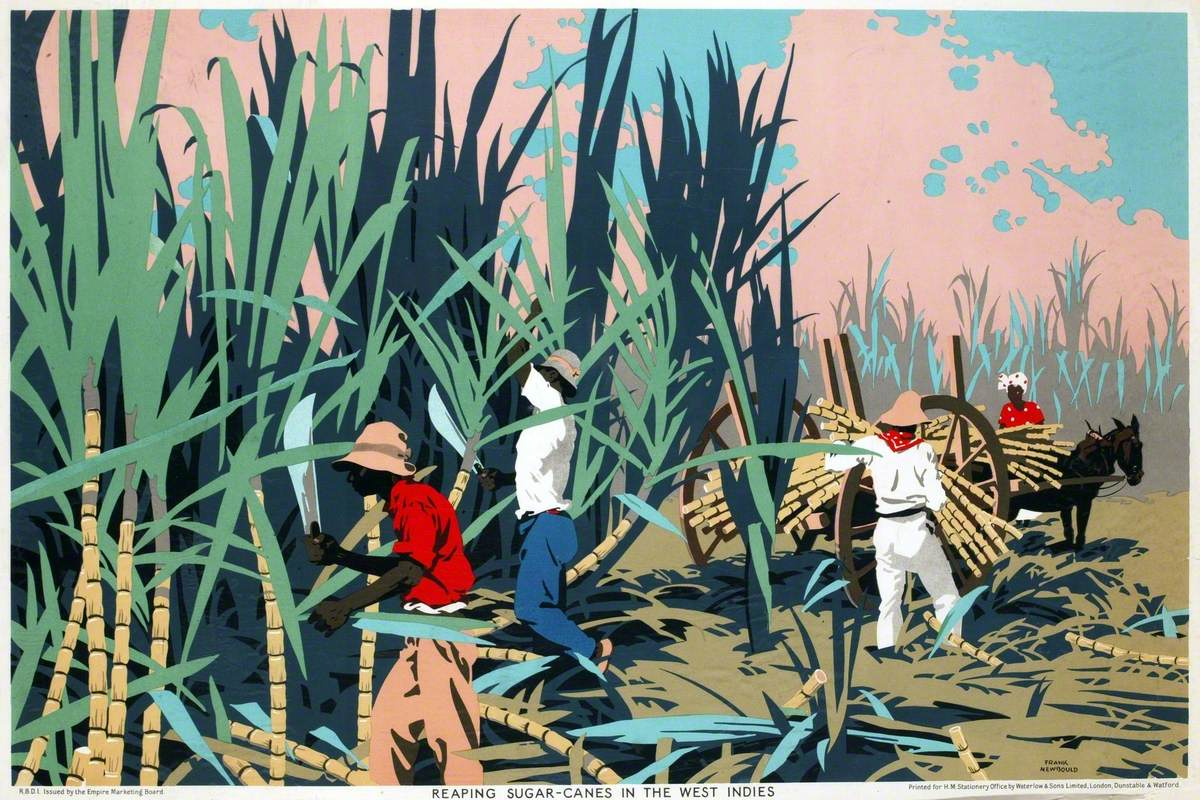ROSE GABBERTAS explores the complex history of sugar in Britain.
A simple cup of tea – white, one sugar – is something that has been quintessentially British for centuries. But scratching the surface of the seemingly innocent act of stirring a spoonful of sugar into a cuppa reveals a dark, oppressive past. In fact, almost the entire social and consumer history of Britain can be examined through a crystallised ‘prism’ of sugar.
The first agricultural production of sugar can be traced to North India, sometime after the first century AD. It wasn’t until the 11th century AD that sugar was first recorded in Britain in 1069, as a result of the Crusades. Over the subsequent centuries, trade between Europe and the East saw sugar become a luxury commodity in Europe; by the medieval period, sugar had been discovered worldwide, with its worth comparable to valuable goods such as musk and pearls.

Today, we consider sugar as a foodstuff or ingredient, but in 12th-century Britain sugar was consumed as a spice, a preservative, and – most crucially – a medicine for a variety of ailments ranging from fevers, coughs, stomach disease and even chapped lips. However, as industrial sugar-refining technology advanced in the 16th and 17th centuries, sugar transformed into a pivotal symbol of wealth and rank amongst the European elite. Throughout the early modern period, sugar’s value was in its materiality as it became an artistic medium, and was used to create elaborate sugar sculptures for the banquet tables of royalty and the aristocracy. As sugar developed into an early form of installation art, confectioners’ social status rocketed as they came to be considered as highly skilled artists. The painstakingly specialised labour required to fashion such intricate sculptures was matched only by the cost of the raw material itself. A single ‘sugarloaf’, which until the late 19th century was the standard form that refined sugar was produced and sold in, would have cost the equivalent of an average labourer’s monthly salary in the 16th century.
The European elite were so beguiled by white sugar not only because it was expensive, but because it was pure, beautiful and exotic. Sugar sculptures enabled the wealthy and the powerful to demonstrate their status through what they served on the table. Such sculptures, however, were a dazzling yet superficial veneer to an ugly, burgeoning business which valued raw materials over human life.

To accommodate the mounting demand for sugar in Europe, more and more sugar plantations were built, first in Brazil and then in the Caribbean. Sugar plantations were gruellingly labour intensive, and plantation owners struggled to source enough Europeans and prisoners to work them. Consequently, it is estimated that between 1500 and 1850, some 20 million African people were shipped to the Americas, marking the largest enforced migration the world has ever seen. It goes without saying that conditions for the enslaved people on plantations were atrocious – there is a fundamental semantic failure when it comes to conveying the sickening inhumanity, indignity and brutality of enslavement and forced labour. Ironically, these African enslaved persons who were branded as ‘primitive’ and ‘unskilled’ helped to build the comparative ‘sophistication’ of the West and revolutionised the way we eat today. As African American cook and author Michael Twitty puts it, the man and the woman who became enslaved in turn enslaved the palettes of those who subjugated them.
As plantations were established in the Caribbean, the price of sugar fell dramatically, and by the 18th century, sugar had become available for consumers from all levels of British society. Initially, sugar was mostly used to sweeten tea, but was soon being added to enriched breads, biscuits and cakes, with confectionery and chocolate becoming immensely popular in the early 20th century. Soon, Britain had the highest annual per-capita consumption of sugar in Europe – it soared from 4lbs in 1704 to 18lbs in 1800 and a staggering 90lbs in 1901. Britain became a nation built on sugar – a nation defined by its sweet tooth. Sugar’s transition from a rare, foreign luxury for the elite to an ordinary necessity of modern life traces the historical progression of Western industry and capitalism, and was entirely facilitated by slavery.

Today, sugar has well and truly fallen from the proverbial pedestal, and is now most associated with its negative effects on our health. Although our sugar consumption is higher than ever, we are constantly reminded by the media of its dangerous health implications: aside from being dense in calories, high consumption of sugar is thought to increase the risk of heart disease, diabetes and potentially cancer. The last few years have seen the UK government impose a ‘sugar tax’ to tackle rising rates of diabetes and obesity. Whilst opinions and studies vary as to the extent of these health implications, there is certainly a recurrent theme: sugar is addictive, and it is this addiction which fuelled centuries of injustice.
As the Black Lives Matter movement resurged in 2020, several corporate businesses were called out for historic slave trade profits, including the British sugar giant Tate and Lyle. Although Tate and Lyle’s history begins with Henry Tate’s partnership with John Wright in 1859 (and thus after the formal abolition of the slave trade), it is still a business built on the shameful exploitative practises of unpaid apprenticeship of former enslaved peoples and the indentured labour of Indian and Chinese people which followed the abolition. Something as ordinary as sugar, then, can be emblematic of the need to be transparent about our cultural history, and to acknowledge the problematic aetiology of modern-day consumerist culture. Failure to address our instrumental role in the sugar trade – and therefore slavery – runs the risk of Britain’s sweet tooth going rotten.

Featured image: Frank Newbould, Waterlow & Sons Ltd, Reaping Sugar Canes in the West Indies, lithograph. Image source: manchesterartgallery.org





